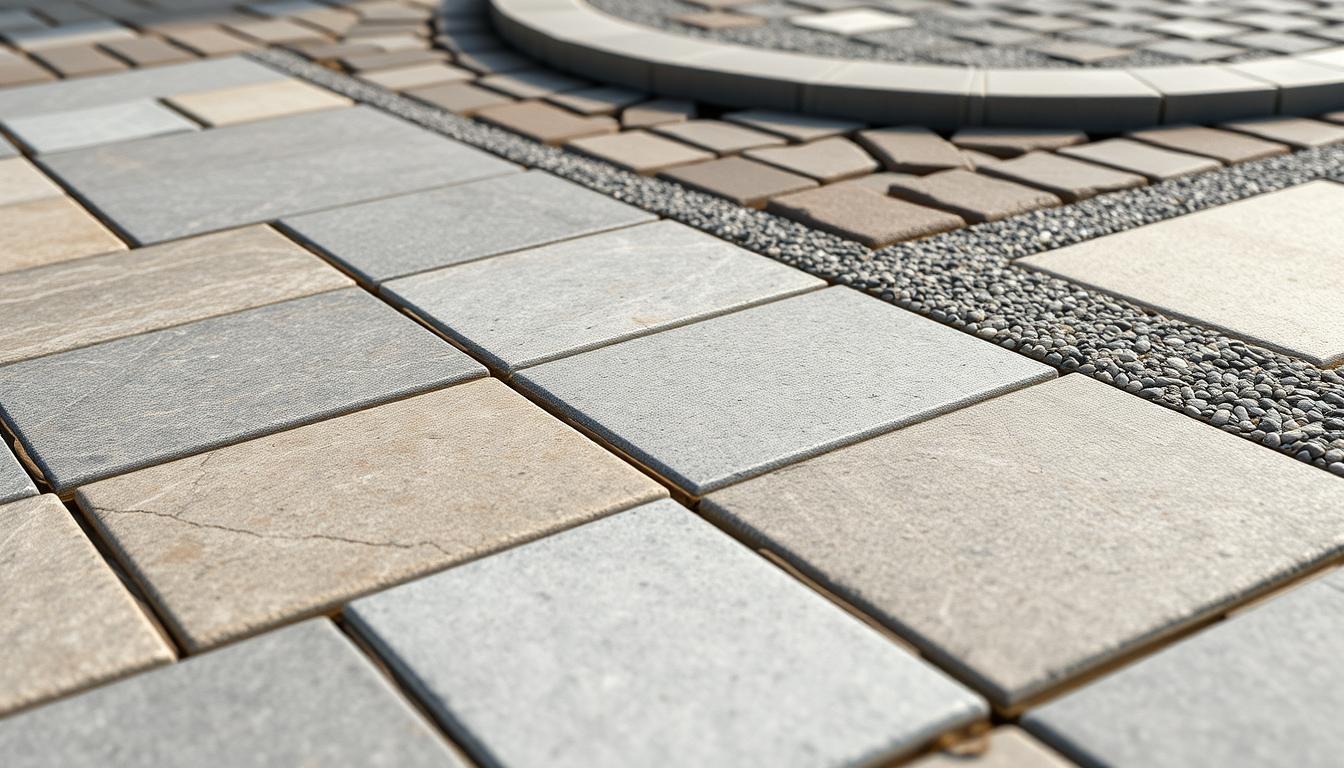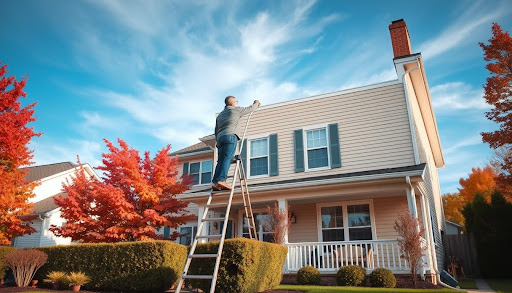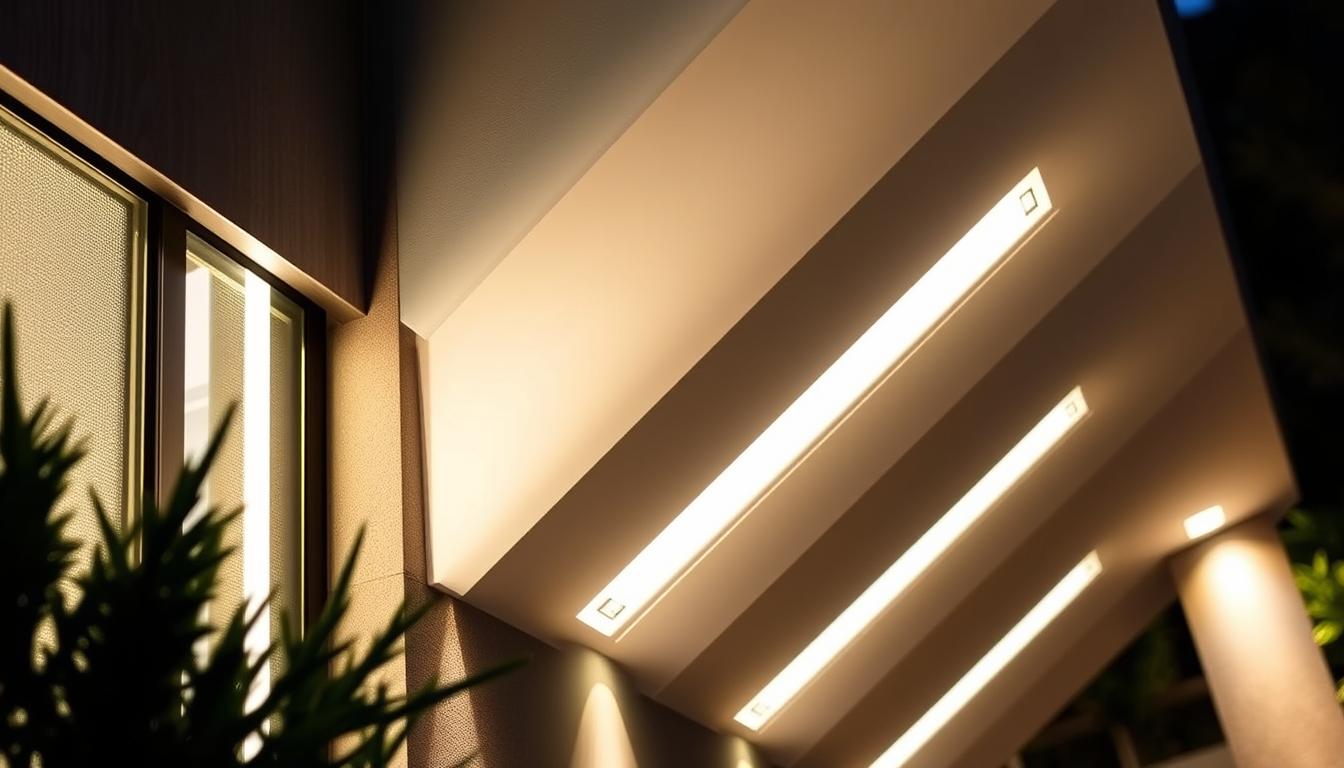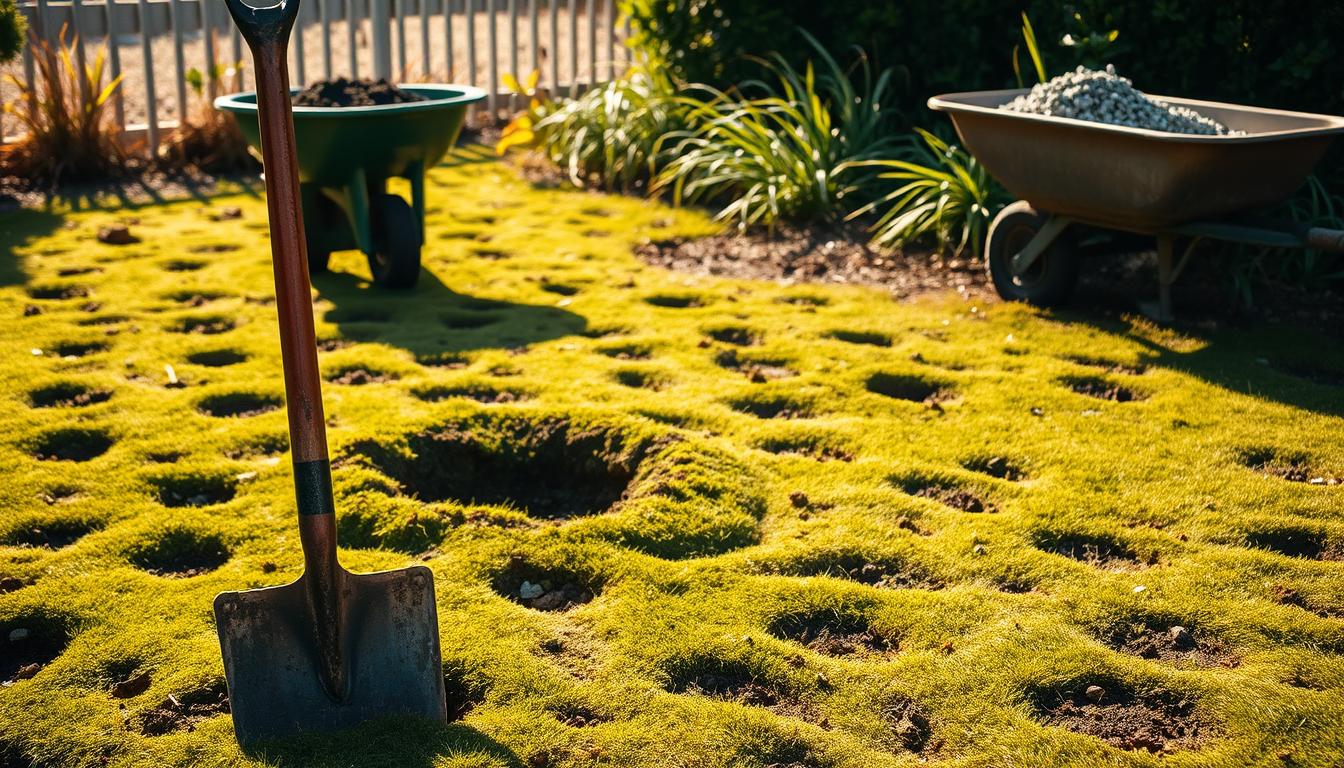Five key strategies will boost your lawn’s water retention capacity: maintain grass height at 3-3.5 inches to promote deep roots, incorporate organic matter through compost topdressing to improve soil structure, implement smart irrigation timing between 4-8 AM for ideal absorption, perform regular core aeration with specialized topdressing mix, and apply a 3-inch natural mulch layer. These interconnected soil management approaches form a complete system that transforms your lawn’s drought resistance potential.
Proper Mowing Height and Grass Management
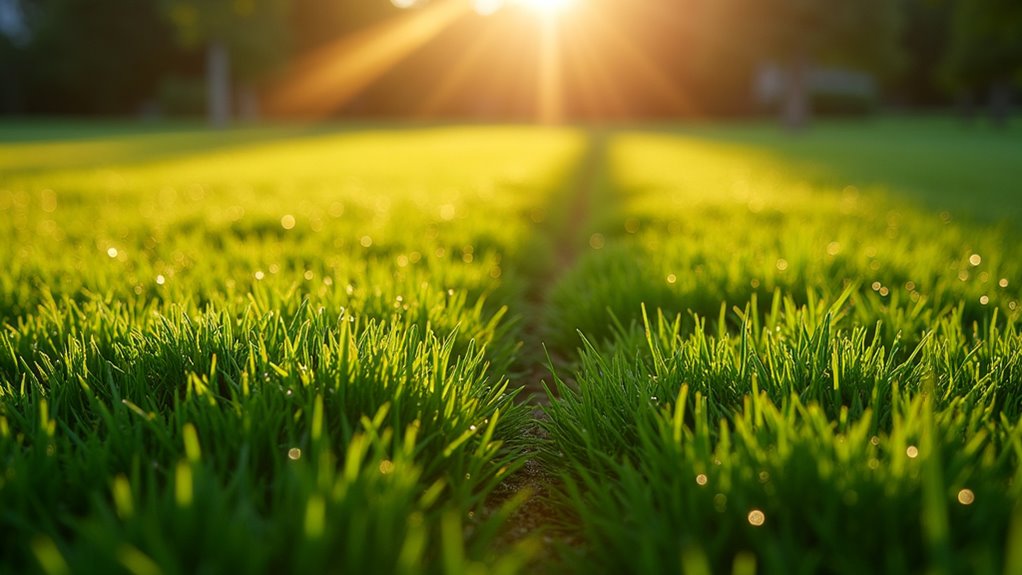
Regarding maximizing your lawn’s water retention capabilities, proper mowing height stands as a critical factor in moisture management. By maintaining grass at 3-3.5 inches, you’ll create a favorable environment for water retention and root development. This height allows the grass to shade the soil, reducing evaporation and protecting roots from heat stress.
You’ll want to avoid scalping your lawn, as removing more than one-third of the grass blade can impair root growth and reduce the plant’s ability to store water. Let fine clippings remain on your green lawn – they’ll decompose into organic matter, acting as a natural mulch that boosts soil moisture retention. Regular mowing prevents excessive clipping accumulation while promoting deep roots and sturdy water retention. This systematic approach guarantees your grass maintains its natural ability to conserve soil moisture.
Organic Matter and Soil Amendment Solutions
While chemical fertilizers provide quick nutrient enhancements, organic matter serves as the foundation for sustainable water retention in your lawn’s ecosystem. Compost topdressing drastically improves your soil’s water holding capacity, helping dry soil maintain moisture and reduce evaporation.
Your lawn’s root system benefits from these essential soil amendments:
- Compost topdressing – Applied twice, it can save 1,850 gallons of water per 2,800 square foot yard
- Organic amendments – Molasses, humate, and zeolite augment moisture retention
- Natural organic matter – Increases water retention and prevents runoff during heavy rainfall
The impact is considerable – when 200,000 homes implement proper organic matter management, they prevent over 350 million gallons of water runoff. This approach transforms your lawn’s ability to hold water while creating a more resilient soil structure.
Smart Irrigation Techniques and Timing
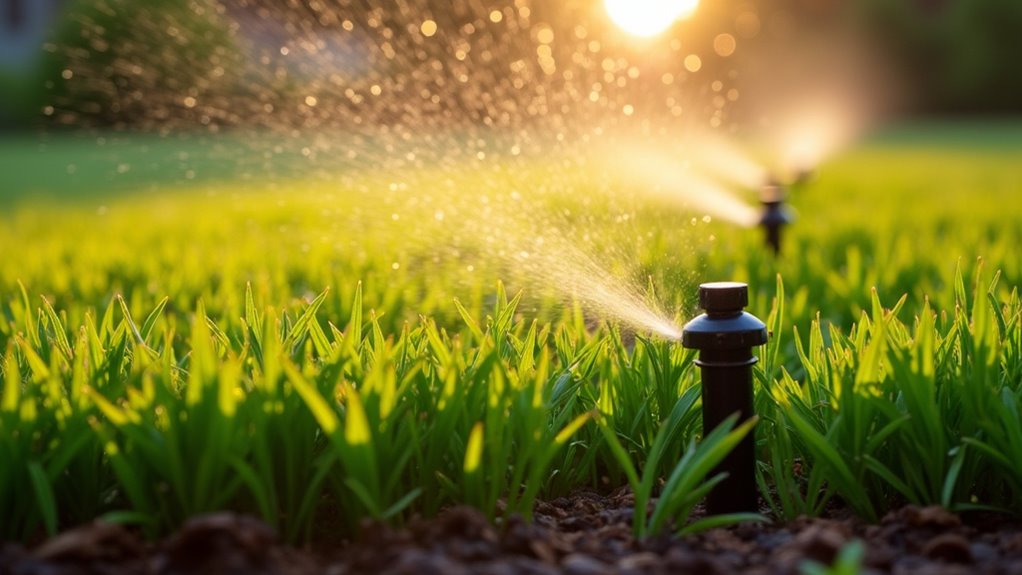
The science of proper lawn irrigation relies heavily on strategic timing and application methods to guarantee water efficiency. You’ll achieve deeper rooting by watering your lawn deeply 1-3 times weekly, rather than frequent shallow watering. Water in the morning between 4-8 AM to optimize absorption into the root zone while minimizing evaporation and fungal risks.
Your soil type dictates irrigation frequency. Sandy soils need more frequent watering, while clay soil requires shorter, split cycles to prevent runoff. To determine precise watering duration, conduct a catch cup test targeting 1-1.5 inches weekly for cool-season grasses. During drought conditions, your lawn needs to be watered strategically to maintain health. Regular maintenance of sprinkler heads confirms uniform coverage, preventing dry spots and water waste through your irrigation system.
Core Aeration and Topdressing Methods
Beyond proper irrigation, improving your soil’s physical structure through core aeration and strategic topdressing creates ideal conditions for water retention. During summer months, your lawn needs this combination to develop deeper roots and stay green. Core aerate every 2-3 months, then apply a 3/8-inch to 1/2-inch topdressing mix for great results.
The science-backed benefits of proper topdressing include:
- A specialized blend of molasses, humate, zeolite, worm castings, and compost acts as a natural water reservoir
- Each 1% increase in organic matter reduces runoff by 27,000 gallons per acre
- Enhanced soil structure keeps root zones cooler in summer and warmer in early fall
Whether you’re establishing a new lawn or maintaining an existing one, leaving clippings on the lawn and implementing regular topdressing practices will greatly improve soil health and water efficiency.
Natural Mulching and Ground Cover Practices

Natural mulching practices serve as foundational elements for maximizing your lawn’s water retention capabilities. By applying a 3-inch layer of native hardwood or cedar mulch, you’ll protect each grass blade while maintaining critical soil moisture. This vital aspect of lawn care helps your grass to grow strong and prevents it from turning brown during dry spells.
Enhance your soil’s structure by incorporating moisture-retaining amendments like lava sand, greensand, and zeolite. These materials work alongside organic additions such as horticultural molasses and cornmeal to guarantee your green lawn remains visible even during challenging conditions. Allowing your lawn to develop a healthy layer of decomposing organic matter is essential for long-term water conservation. When combined with drought-tolerant perennials, this approach ensures your short grass receives enough water while reducing overall irrigation needs.
Frequently Asked Questions
How Do I Improve the Water Retention in My Lawn?
You’ll bolster your lawn’s water retention through a multi-step soil management approach. Start with soil aeration and lawn dethatching to improve water penetration. Add organic matter and water-holding polymers to amplify moisture retention capacity. Consider upgrading your irrigation system and introducing drought-tolerant grass varieties. Implement mulching around plants to reduce evaporation, and improve soil drainage. If possible, reduce your lawn size to minimize water requirements while maintaining effectiveness.
What Is the 1/2/3/2:1 Lawn Watering Technique?
The 1/2/3/2:1 technique is a water conservation strategy that uses specific timing of watering ratios to enhance soil absorption. You’ll water for 1 hour, wait 2 hours, water for 3 hours, wait 2 hours, and finish with 1 hour. This efficient lawn irrigation method prevents runoff and encourages deeper root development. You can adjust your sprinkler system settings to automate this cycle, which is particularly effective when combined with proper lawn aeration for ideal water retention.
How to Increase Water Absorption in a Lawn?
You’ll optimize water absorption by implementing soil aeration techniques that break up compacted soil, allowing deep root penetration. Add moisture retaining soil amendments like compost and mulch around plants to improve soil structure. Adjust your mowing patterns and height to protect soil moisture, and consider drought resistant grass species. Combine these with efficient irrigation systems and proper lawn maintenance, focusing on deep, infrequent watering schedules that encourage roots to grow deeper.
How Do I Fix My Yard That Holds Water?
To fix your water-holding yard, you’ll need to optimize soil composition through core aeration and incorporate organic matter like compost. Install drainage systems to redirect excess water, and manage thatch buildup regularly. You can promote healthy grass by adjusting irrigation schedules for deeper, less frequent watering. Utilize mulch effectively around plants to improve soil structure. Employ water-retaining plants in problem areas, and improve soil aeration to boost water movement through the soil profile.



